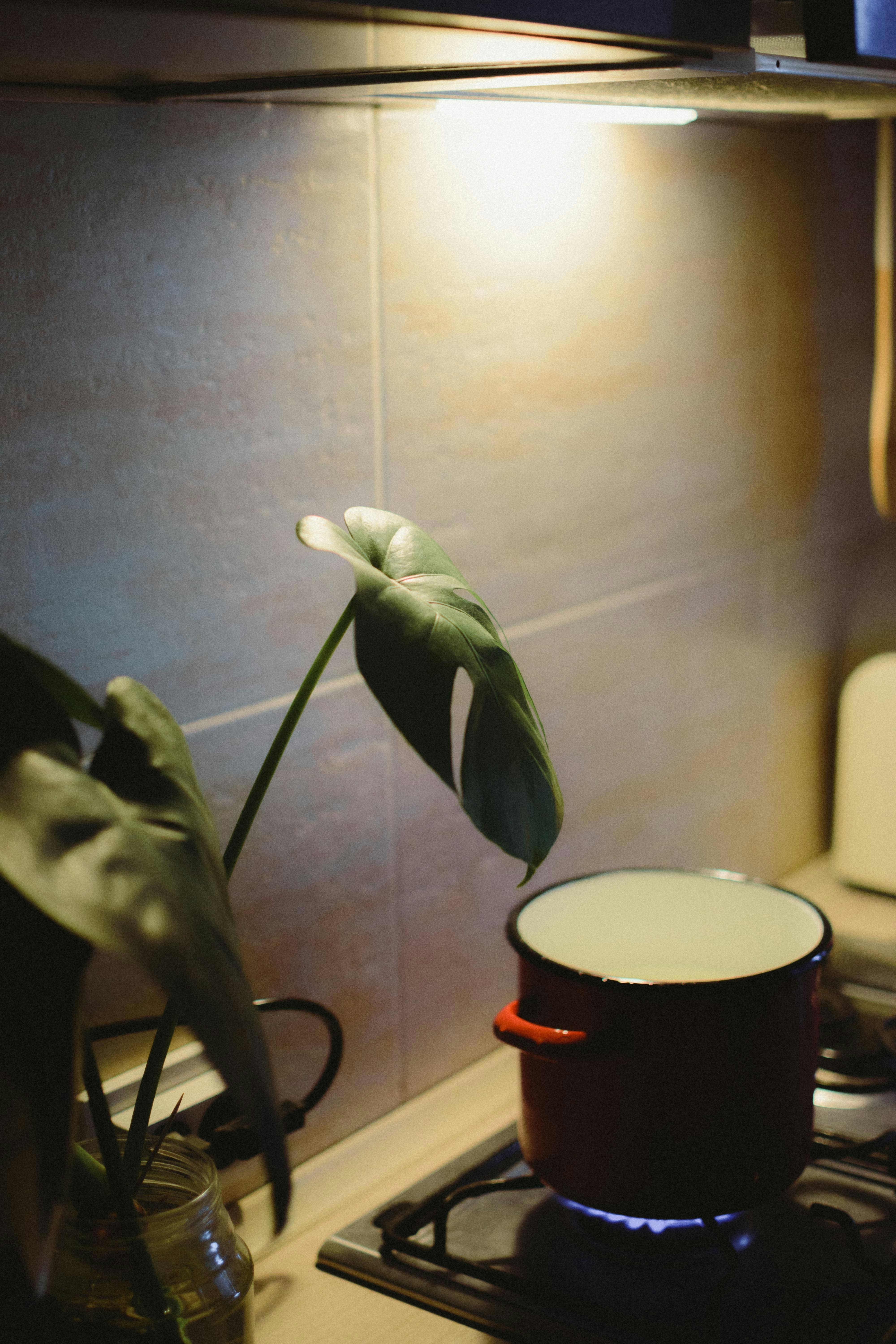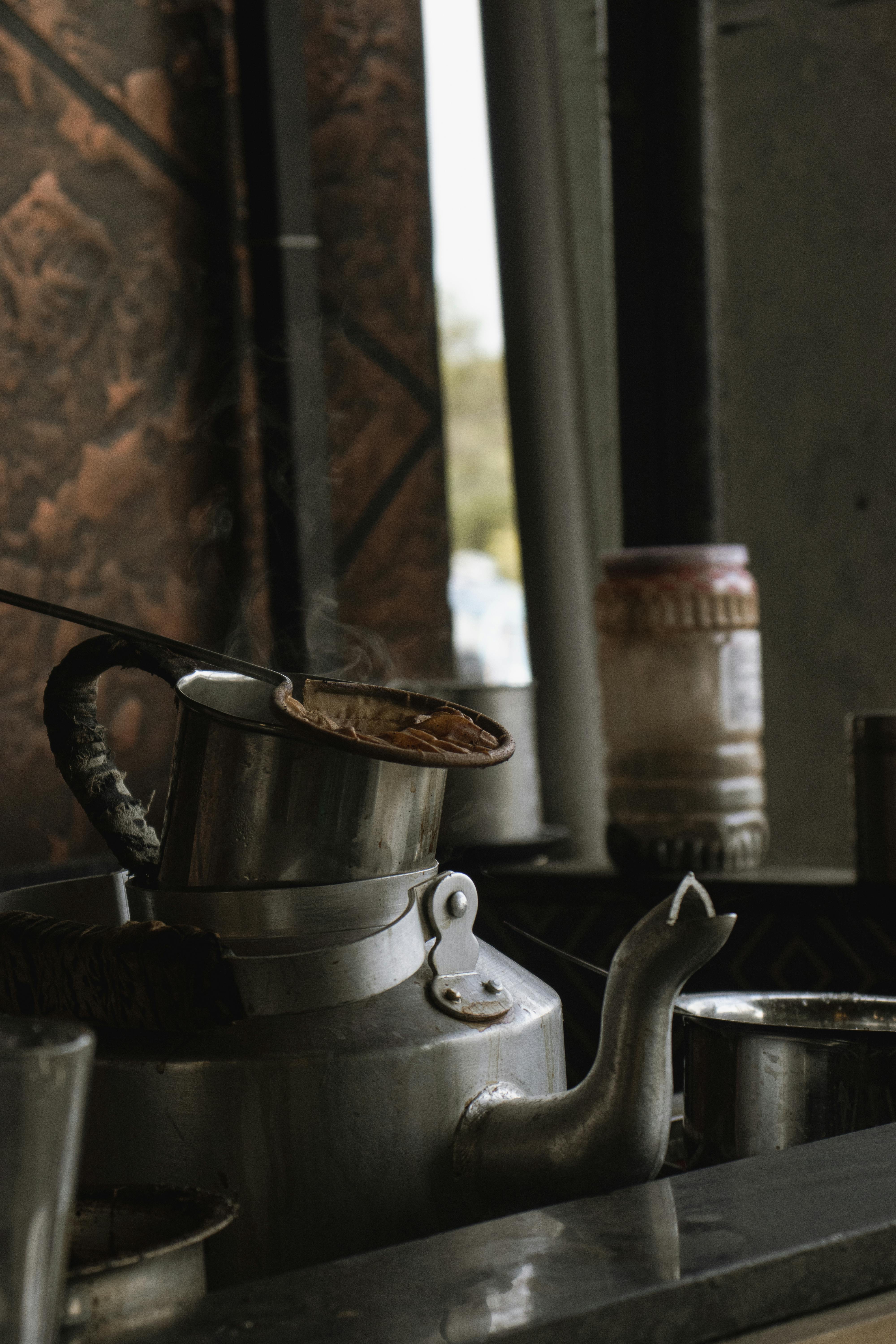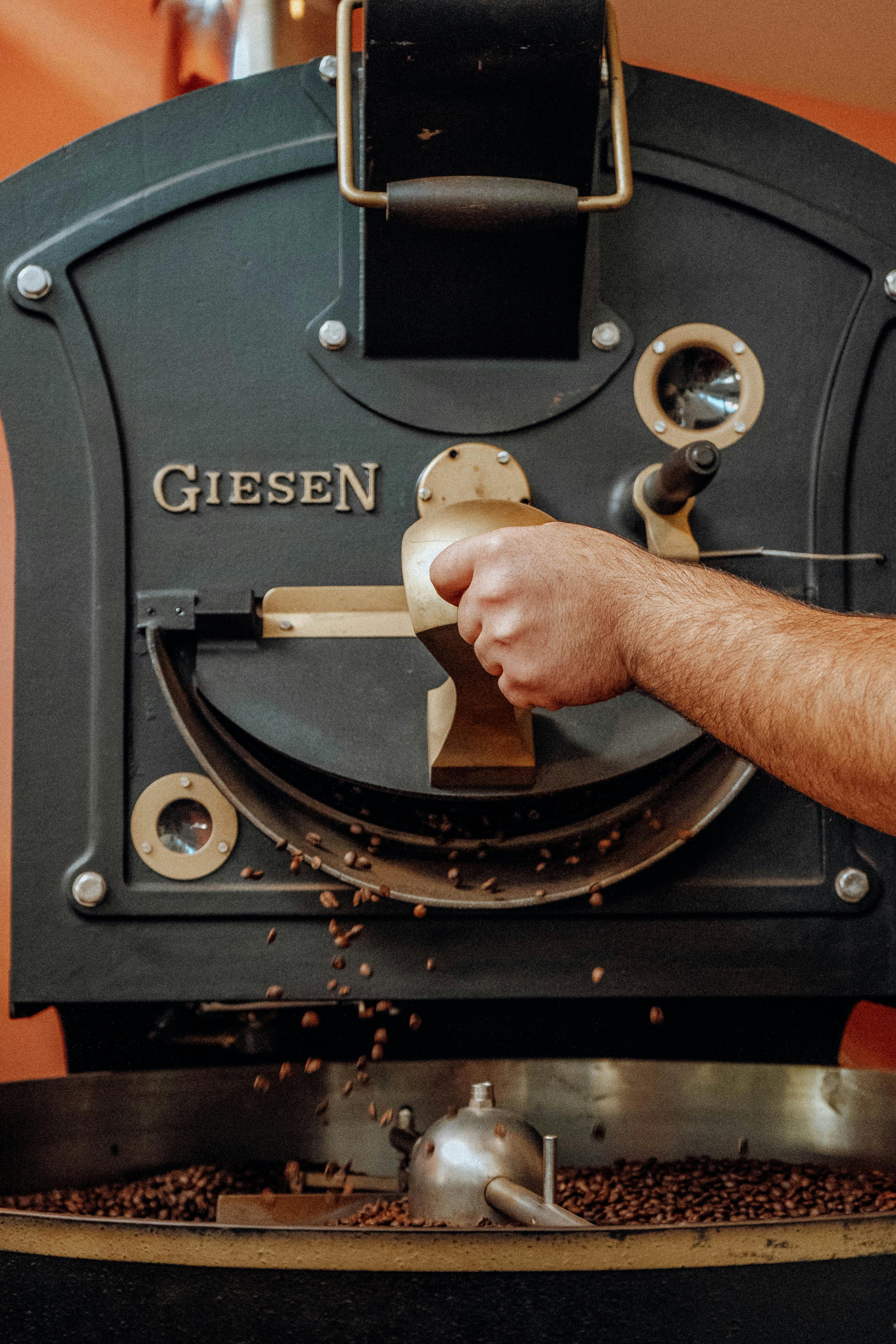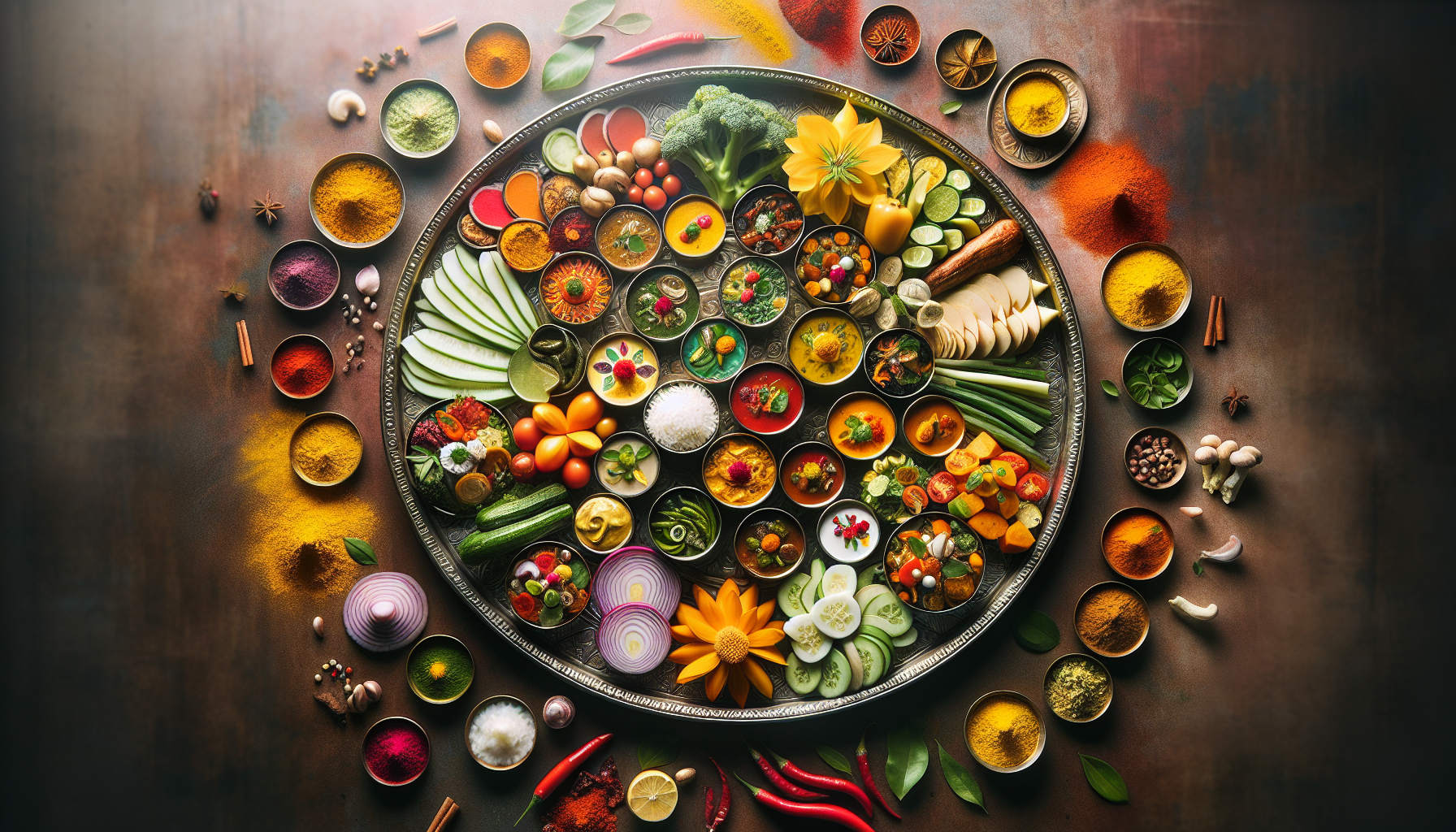Immerse yourself in the vibrant and flavorful world of Indian cuisine as you discover the art of Indian food styling. From the aromatic spices that tantalize your senses to the regional specialties that celebrate the diverse culinary traditions of India, this article on IndianCulture.com will introduce you to the visual delights of Indian food. Learn how food styling techniques can transform a simple dish into a work of art, and gain a deeper appreciation for the fusion of flavors and colors that make Indian cuisine truly unique. Get ready to embark on a mouthwatering journey through the art of Indian food styling, where every plate becomes a canvas and every bite is a feast for the eyes.
Understanding Indian Cuisine

1.1 Regional Differences in Indian Food
Indian cuisine is incredibly diverse, with each region having its own unique flavors and cooking techniques. From the spicy curries of the north to the coconut-infused dishes of the south, there is a wide variety of regional cuisines to explore. The cuisine of India is influenced by factors such as climate, geography, and cultural traditions, which have resulted in distinct culinary styles in different parts of the country. Exploring the regional differences in Indian food provides a deeper understanding of the diverse and vibrant culinary landscape of India.
1.2 Key Ingredients in Indian Cuisine
Indian cuisine is known for its rich and bold flavors, which are achieved through the use of key ingredients. Some of the staple ingredients in Indian cooking include aromatic spices, such as cumin, turmeric, and coriander, which are used to add depth and complexity to dishes. Other common ingredients include lentils, rice, wheat, dairy products (such as ghee and yogurt), and various types of vegetables. The combination of these ingredients is what gives Indian food its distinct taste and character.
1.3 Spices Used in Indian Cooking
Spices play a crucial role in Indian cooking, adding flavor, aroma, and color to dishes. Indian cuisine is famous for its use of a wide range of spices, which vary from region to region. Some of the most commonly used spices include cumin, coriander, turmeric, cardamom, cloves, cinnamon, and chili powder. These spices not only enhance the taste of the food but also have several health benefits. They are known to have anti-inflammatory properties and can aid in digestion, making Indian cuisine not only delicious but also beneficial for your overall well-being.
The Importance of Food Presentation in Indian Culture
2.1 Significance in Social Gatherings
In Indian culture, food is not just nourishment but also a means of connecting with others. It holds great social and cultural significance, and the way food is presented plays a vital role in creating a memorable dining experience. Whether it’s a small gathering or a grand celebration, the presentation of food is given utmost importance. Each dish is beautifully arranged on the plate, with a focus on colors, textures, and overall aesthetics. This attention to detail enhances the overall dining experience and leaves a lasting impression on the guests.
2.2 Spiritual Aspect
Food presentation in Indian culture is not only about visual appeal but also has a spiritual aspect. In many Indian households, food is considered a divine offering and is prepared and presented with great reverence. The arrangement of dishes and the use of traditional serving dishes are imbued with symbolic meaning. It is believed that the presentation of food can please the deities and bring blessings and good fortune to the household. This spiritual aspect adds a deeper significance to the art of food presentation in Indian culture.
2.3 Influence of Indian Festivals
Indian festivals are vibrant and colorful celebrations that bring people together in joyous gatherings. Food plays a central role in these festivities, and the presentation of dishes is taken to another level during these occasions. Elaborate feasts are prepared, and every dish is carefully curated and presented with creativity and flair. Festivals like Diwali, Holi, and Eid are known for their exquisite food presentations, which add to the festive atmosphere and create a sense of abundance and celebration.
Principles of Indian Food Styling
3.1 Balance of Colors and Textures
One of the key principles of Indian food styling is achieving a harmonious balance of colors and textures on the plate. Indian cuisine is known for its vibrant and diverse array of colors, thanks to the use of spices, vegetables, and herbs. When plating a dish, it is important to consider the different colors present in the dish and how they can be arranged to create an aesthetically pleasing composition. Additionally, incorporating a variety of textures, such as crunchy, creamy, and soft, adds another dimension to the visual appeal of the dish.

3.2 Placement and Arrangement
The placement and arrangement of dishes on the plate are crucial in Indian food styling. Consideration should be given to the shape and size of the plate, as well as the layout of the different components of the dish. The goal is to create a visually appealing arrangement that is pleasing to the eye and showcases the various elements of the dish. For example, placing a vibrant curry in the center of the plate and surrounding it with contrasting garnishes and accompaniments can create a striking visual effect.
3.3 Garnishing Techniques
Garnishing is an important aspect of Indian food styling, as it adds the finishing touch to the dish and enhances its visual appeal. Traditional garnishing techniques in Indian cuisine include sprinkling fresh herbs, such as cilantro or mint, on top of the dish, or garnishing with a swirl of yogurt or a drizzle of colorful sauce. Another popular garnishing technique is the use of edible flowers, such as marigolds or rose petals, which not only add visual beauty but also infuse the dish with a subtle fragrance.
Tools and Equipment for Indian Food Styling
4.1 Traditional Indian Serving Dishes
Traditional Indian serving dishes play a vital role in the presentation of Indian food. These dishes are often made of materials such as stainless steel, brass, or copper, and come in a variety of shapes and sizes. Some commonly used serving dishes include thalis (a round platter with multiple compartments for different dishes), handis (earthenware cooking pots), and tawas (flat griddles). These traditional serving dishes not only add an authentic touch to the presentation but also help in keeping the food warm and retaining its flavors.
4.2 Modern Food Presentation Tools
With the advent of modern food styling techniques, several innovative tools and equipment have emerged that can be used to enhance the presentation of Indian dishes. These include ring molds for shaping rice or mashed potatoes, tweezers for precise placement of garnishes, and squeeze bottles for creating artistic sauce drizzles. These tools allow for greater precision and creativity in food presentation and provide a contemporary twist to traditional Indian cuisine.
4.3 Photography and Lighting Equipment
Photography plays a crucial role in showcasing the beauty of Indian food styling. Capturing the vibrant colors and intricate details of the dishes requires the right equipment. A good camera with macro capabilities and a selection of lenses, such as a macro lens for close-up shots and a wide-angle lens for capturing the overall presentation, are essential tools for food photography. Additionally, proper lighting equipment, such as diffusers and reflectors, helps to create a flattering and well-lit photograph.
Classic Indian Dishes and Their Presentation
5.1 Butter Chicken (Murgh Makhani)
Butter Chicken, also known as Murgh Makhani, is a classic Indian dish that originated in the state of Punjab. This rich and flavorful chicken curry is known for its creamy tomato sauce and tender pieces of chicken. When it comes to presentation, Butter Chicken is often served in a traditional thali, with the curry placed in the center compartment and accompanied by rice or naan bread in the surrounding compartments. Garnishes such as fresh cilantro leaves and a drizzle of cream are added to enhance the visual appeal of the dish.
5.2 Biryani
Biryani is a popular rice dish that is made with aromatic spices, meat or vegetables, and basmati rice. There are various regional variations of Biryani, each with its own unique presentation style. In general, Biryani is often served in a large, decorative handi or a copper pot, which adds a touch of elegance to the presentation. The top layer of rice is typically garnished with fried onions, cashews, and raisins, while the meat or vegetables are arranged in layers throughout the dish. This layering technique not only adds visual appeal but also ensures that every bite is flavorful.

5.3 Chole Bhature
Chole Bhature is a popular North Indian dish that consists of spicy chickpea curry, known as chole, served with deep-fried bread called bhature. This dish is often presented on a colorful plate, with the chole arranged in the center and the bhature placed around it. The chole is garnished with fresh cilantro leaves, a squeeze of lemon juice, and a sprinkle of chaat masala for an added burst of flavor. The combination of the vibrant red curry, golden bhature, and green garnishes creates a visually striking presentation.
Regional Indian Cuisines and Their Unique Styling
6.1 South Indian Cuisine
South Indian cuisine is known for its liberal use of rice, coconut, and spices. The presentation of South Indian dishes is often simple and minimalist, with the focus being on the flavors and textures of the food. Dishes like dosas and idlis are traditionally served on banana leaves, which not only add a subtle aroma but also create a visually appealing contrast against the food. Chutneys and sambar, which are commonly served as accompaniments, are presented in small bowls or katoris, adding pops of color to the overall presentation.
6.2 Rajasthani Cuisine
Rajasthani cuisine, from the desert state of Rajasthan, is known for its bold flavors and unique presentation style. Dishes like Dal Baati Churma and Gatte ki Sabzi are often presented on traditional brass or copper thalis, adding a touch of royalty to the dining experience. The use of vibrant food colors, such as saffron and red chili powder, is common in Rajasthani cuisine, making the dishes visually appealing. Elaborate garnishes, such as a sprinkling of crushed almonds or a drizzle of ghee, are also used to enhance the presentation.
6.3 Bengali Cuisine
Bengali cuisine, from the eastern state of West Bengal, is known for its subtle flavors and delicate presentation. Fish plays a central role in Bengali cuisine, and dishes like Mustard Hilsa and Shorshe Ilish are presented with elegance and finesse. The sauces are beautifully arranged and garnished with fresh herbs, such as coriander or kasuri methi, to add a touch of green. Traditional serving dishes, such as terracotta bowls or clay pots, are often used to maintain the authenticity and enhance the visual appeal of the dishes.
Fusion of Indian and Western Food Styling
7.1 Indian-Inspired Tapas
Indian and Western food styling can be seamlessly blended to create unique and flavorful dishes. One popular fusion trend is the concept of Indian-inspired tapas, which involves serving bite-sized Indian dishes with a modern twist. For example, bite-sized samosas can be presented on a platter with a selection of chutneys, or mini tandoori skewers can be arranged on a wooden board with a yogurt dip. The small portions and creative presentation make Indian-inspired tapas perfect for social gatherings and cocktail parties.
7.2 Indian Fusion Desserts
When it comes to desserts, Indian flavors can be incorporated into Western-style desserts to create a harmonious fusion of flavors. For example, a classic cheesecake can be infused with cardamom and saffron, or a traditional Indian sweet like gulab jamun can be transformed into a decadent ice cream flavor. The presentation of Indian fusion desserts can be playful and artistic, with the use of vibrant colors and elaborate garnishes. This fusion of Indian and Western dessert styling is a delightful way to introduce the flavors of India to a wider audience.
7.3 Indo-Mexican Cuisine
The combination of Indian and Mexican cuisines may seem unconventional, but the flavors and presentation can complement each other beautifully. Dishes like Indian-inspired tacos, with fillings like butter chicken or paneer tikka, can be presented on a colorful platter with an array of toppings and garnishes. The use of vibrant spices and fresh herbs in both cuisines adds a burst of flavor and visual appeal. The fusion of Indian and Mexican food styling creates a unique dining experience that showcases the best of both worlds.
Tips and Tricks for Indian Food Styling
8.1 Using Props and Backgrounds
Incorporating props and backgrounds can enhance the overall presentation of Indian dishes. Utilize traditional Indian textiles, such as colorful sarees or embroidered tablecloths, as a backdrop for your food photography. Additionally, props like brass utensils, copper bowls, or wooden spatulas can be strategically placed to enhance the authenticity and visual appeal of the dish. Experiment with different textures, patterns, and colors to create a visually captivating composition.
8.2 Capturing the Essence of the Dish
When photographing Indian food, it is important to capture the essence of the dish. Highlight the colors, textures, and intricate details of the food to make it visually appealing. Pay attention to the lighting and ensure that the food is well-lit, avoiding harsh shadows. Experiment with different angles and compositions to find the most flattering and visually interesting shot. The goal is to evoke a sense of desire and make the viewer want to taste the dish.
8.3 Incorporating Traditional Indian Elements
To create an authentic Indian food styling experience, it is important to incorporate traditional Indian elements into the presentation. This can include using traditional serving dishes, such as thalis or handis, or incorporating Indian motifs into the table setting. Consider using traditional Indian spices or herbs as garnishes, such as whole cardamom pods or fresh curry leaves, to add a touch of authenticity. By incorporating these traditional elements, you can elevate the overall presentation and create a visually appealing representation of Indian cuisine.
Resources and Inspirations for Indian Food Styling
9.1 Indian Food Styling Blogs and Websites
There are several Indian food styling blogs and websites that provide valuable resources and inspiration for creating visually stunning Indian dishes. These platforms offer tips, tutorials, and recipes to help you hone your food styling skills. Some popular Indian food styling blogs and websites include Veg Recipes of India, Archana’s Kitchen, and Indian Simmer. These resources are perfect for aspiring food stylists who want to learn more about Indian cuisine and its presentation.
9.2 Cookbooks and Food Photography Guides
Cookbooks and food photography guides are excellent sources of inspiration for Indian food styling. Books like “Indian Accent Cookbook” by Manish Mehrotra and “Plate to Pixel: Digital Food Photography & Styling” by Helene Dujardin offer insights into the art of Indian food styling and provide practical tips for capturing stunning food photographs. These resources combine culinary expertise with visual storytelling, making them valuable references for anyone interested in the art of Indian food styling.
9.3 Social Media and Online Communities
Social media platforms like Instagram and Facebook can be great sources of inspiration for Indian food styling. Follow food stylists, chefs, and bloggers who specialize in Indian cuisine to discover new techniques, trends, and creative ideas. Additionally, online communities and forums dedicated to food styling can be valuable platforms for sharing and learning from fellow food stylists. Engaging with these communities allows you to connect with like-minded individuals and expand your knowledge and skills in Indian food styling.
Conclusion
Indian food styling is a captivating art form that combines flavors, colors, and textures to create visually delightful dishes. The regional differences in Indian cuisine, the significance of food presentation in Indian culture, and the principles of Indian food styling all contribute to the unique and vibrant nature of this culinary art. With the right tools, techniques, and inspiration, anyone can master the art of Indian food styling and create visually stunning dishes that captivate both the eyes and the taste buds. So go ahead, explore the rich and diverse world of Indian cuisine, and let your creativity shine on the plate.
